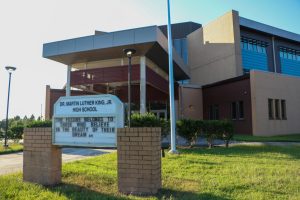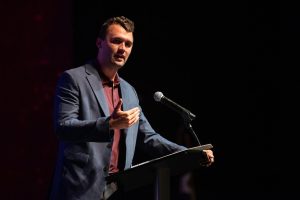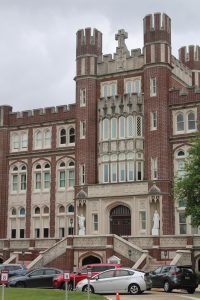Voodoo is about more than Halloween
October 30, 2014
Halloween and the voodoo dolls, gris-gris, shrunken skulls and magic that make up Voodoo folklore in New Orleans would, on a surface level, seem to be the perfect match.
Upon arriving at the Voodoo Spiritual Temple, I found myself in a crowd of tourists from all over the country who presumably made this same asociation between Halloween and New Orleans Voodoo and thought a visit to Priestess Miriam and the spirit of Oswan’s temple would be an essential stop on their tour of the city. Although a curiosity of Voodoo culture is not a fault, it is important not to blindly associate New Orleans and Voodoo, which can be difficult to do for tourists who come here and see barbecue chains and an arena football team named after the culture.
Voodoo Spiritual Temple was founded in 1990 by Priestess Miriam and Priest Oswan Chamani. It is the only Voodoo establishment in New Orleans that focuses on the traditional West African spiritual and herbal healing brought to New Orleans during Louisiana’s colonial period in the early 18th century. The Temple is further connected to its African roots by its location: It is situated directly across the street from Congo Square. Aside from the weekend tourist population, people from all walks of life plagued by all sorts of troubles visit Priestess Miriam on any day of the week.
“My life here is an everyday service,” Priestess Miriam said, sitting behind a desk surrounded by altars densely packed with bright figurines, half empty bottles of rum and wooden African masks adorned with cigarettes hanging from their mouths.
Priestess Miriam explained that most people who walk through her door do not necessarily do so with the intent to learn about Voodoo and her practice, but rather to seek assistance in addressing an ongoing negative experience in their life that is preventing them from spiritual advancement.
“They want to feel that they can come and get a service from me that can make them feel whole in what they want to go out and practice, and so, if you help a person to find a common ground with his purpose and idea, then he can go out and make great advancements in his own practice. It’s not about my practice,” Priestess Miriam said.
With Priestess Miriam’s guidance, her troubled visitors go out into the world with the feeling of ease that enables them to battle their spiritual demons.
Giving to the spirits at the altars, which I imagined was a central part of any visit to a Voodoo temple, is not imposed upon Priestess Miriam’s guests. Priestess Miriam explained that her guests leave something at the altar only when they feel inspired to do so. She continued to say that one should give, “not because someone challenges or pressures you, but because of a feeling of excitement from the soul to give.”
At Priestess Miriam’s temple, the church seems to be something inside of you rather than a physical institution to which you have to devote yourself.
“People have a false illusion that they are to be so involved in the church that they lose themselves,” Priestess Miriam said.
She believes that the real purpose of going to a place of worship is to gain insight into yourself so that you can improve, address difficulties in your life and apply what you have learned in spiritual introspection to the outside world.
“It’s just amazing — the games humanity plays… playing the game of life,” Priestess Miriam said, laughing, while remembering the many colorful characters she has encountered in her temple over the years. “Nothing is amazing to you ever again.”
She closed our discussion with a reference to the old TV personality, Art Linkletter, who she said would always conclude his show with the line: “People are funny.” After more than two decades of meeting spiritually lost, confused, torn people, Priestess Miriam has drawn the same conclusion.
If you would like to join in on the temple’s festivites over Halloween weekend, there will be an Open House and Lecture on Prosperity on Halloween Day and an All Saints Day Wedding the following day.






